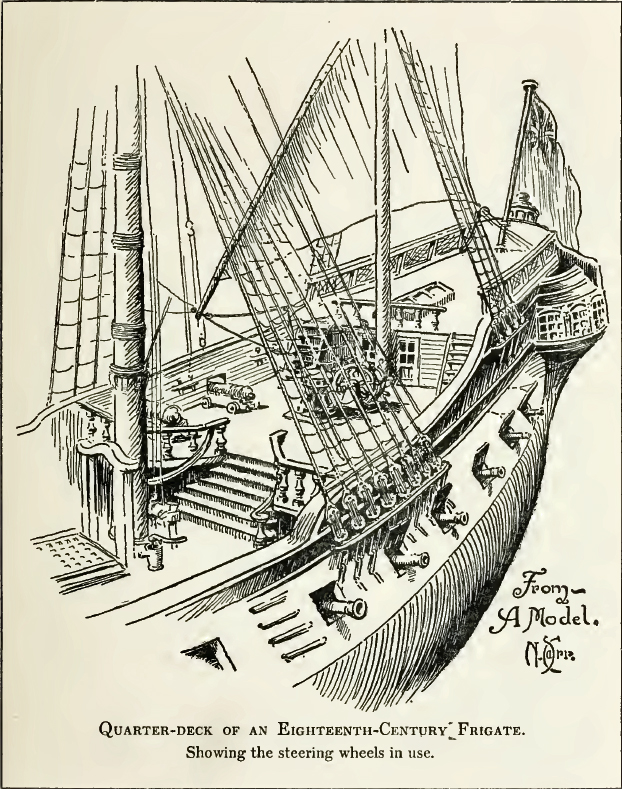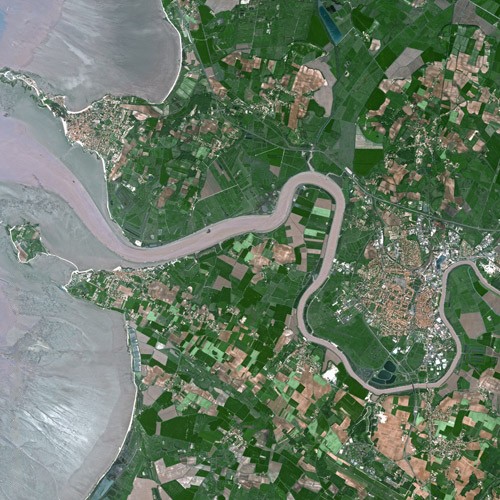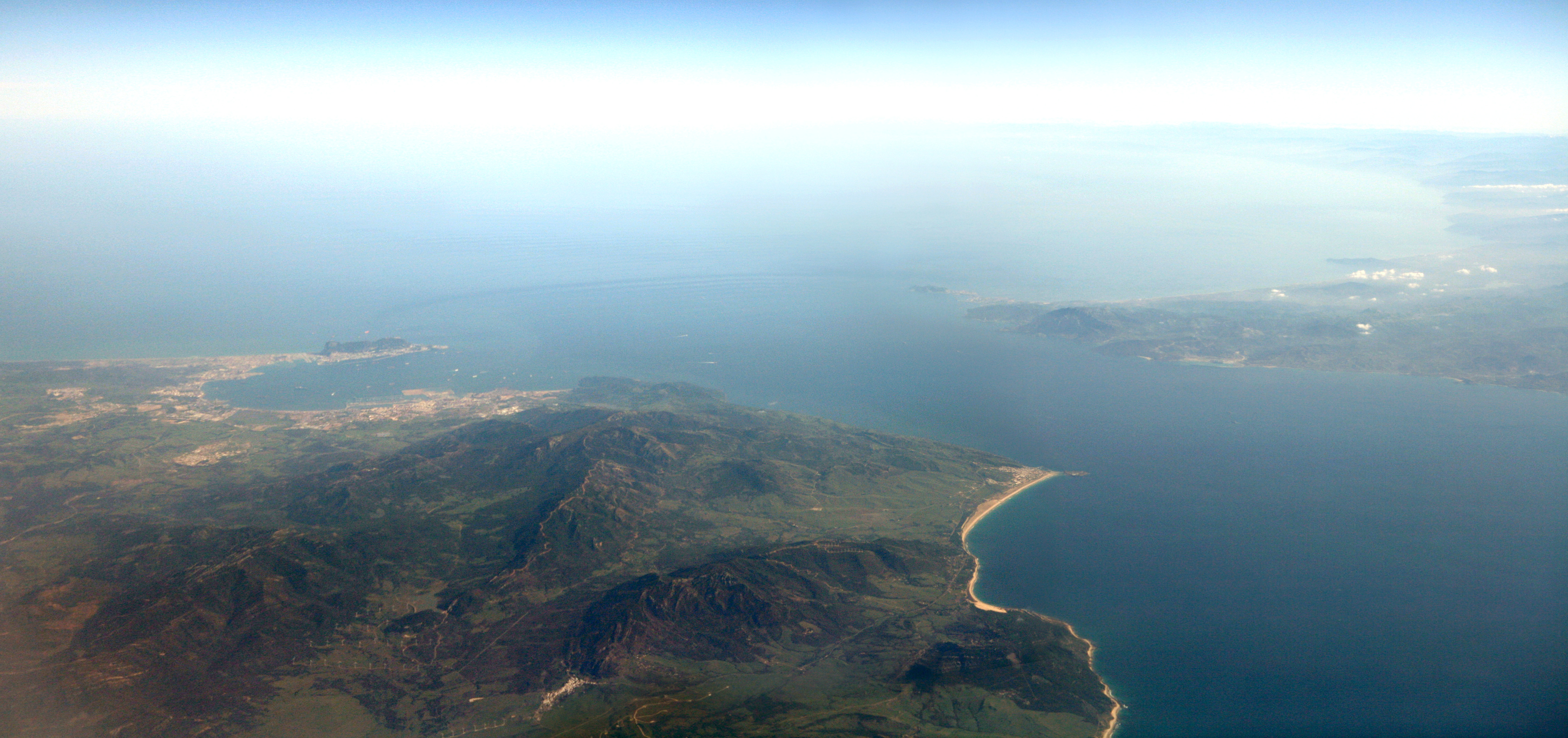|
Battle Of Cape Ortegal
The Battle of Cape Ortegal was the final action of the Trafalgar campaign, and was fought between a squadron of the Royal Navy and a remnant of the fleet that had been defeated earlier at the Battle of Trafalgar. It took place on 4 November 1805 off Cape Ortegal, in north-west Spain and saw Captain Sir Richard Strachan defeat and capture a French squadron under Rear-Admiral Pierre Dumanoir le Pelley. It is sometimes referred to as Strachan's Action. Dumanoir had commanded the van of the line at Trafalgar, and had managed to escape the battle having suffered relatively little damage. He initially attempted to continue the fleet's mission and enter the Mediterranean, but fearful of encountering strong British forces, changed his mind and headed north to skirt round Spain and reach the French Atlantic ports. On his journey he encountered two British frigates and drove them off; shortly afterwards he encountered a single British frigate and gave chase to it. The frigate led Duma ... [...More Info...] [...Related Items...] OR: [Wikipedia] [Google] [Baidu] |
Frigate
A frigate () is a type of warship. In different eras, the roles and capabilities of ships classified as frigates have varied somewhat. The name frigate in the 17th to early 18th centuries was given to any full-rigged ship built for speed and maneuverability, intended to be used in scouting, escort and patrol roles. The term was applied loosely to ships varying greatly in design. In the second quarter of the 18th century, the 'true frigate' was developed in France. This type of vessel was characterised by possessing only one armed deck, with an unarmed deck below it used for berthing the crew. Late in the 19th century (British and French prototypes were constructed in 1858), armoured frigates were developed as powerful ironclad warships, the term frigate was used because of their single gun deck. Later developments in ironclad ships rendered the frigate designation obsolete and the term fell out of favour. During the Second World War the name 'frigate' was reintroduced to des ... [...More Info...] [...Related Items...] OR: [Wikipedia] [Google] [Baidu] |
Thomas Baker (Royal Navy Officer)
Vice-Admiral Sir Thomas Baker KCB (1771 – 26 January 1845) was an officer of the Royal Navy, who saw service during the American War of Independence, and the French Revolutionary and Napoleonic Wars. He had obtained his own command during the French Revolutionary Wars and was to play a part in bringing about three of the battles of the Napoleonic Wars, the Battle of Copenhagen, the Battle of Trafalgar, and the Battle of Cape Ortegal. He only directly participated in the third, but his actions there, and the capture of the French frigate beforehand brought him honours and rewards. While towing the ''Didon'' to a British port, he and another vessel were sighted by the combined Franco-Spanish fleet under Pierre-Charles Villeneuve, and mistaken as scouts for the Channel Fleet. He therefore turned south to Cadiz, leading to the abandonment of the planned invasion of England, and the destruction of the French fleet at Trafalgar by Horatio Nelson some months later. He rose throu ... [...More Info...] [...Related Items...] OR: [Wikipedia] [Google] [Baidu] |
HMS Phoenix (1783)
HMS ''Phoenix'' was a 36-gun fifth-rate frigate of the Royal Navy. The shipbuilder George Parsons built her at Bursledon and launched her on 15 July 1783. She served in the French Revolutionary and Napoleonic Wars and was instrumental in the events leading up to the battle of Trafalgar. ''Phoenix'' was involved in several single-ship actions, the most notable occurring on 10 August 1805 when she captured the French frigate ''Didon'', which was more heavily armed than her. She was wrecked, without loss of life, off Smyrna in 1816. Active service She was commissioned in October 1787 under Captain John W. Payne, and paid off in December. Recommissioned in October 1788, she sailed for the East Indies in November under Captain George A. Byron. East Indies In the beginning of November 1791, , Commodore William Cornwallis, ''Phoenix'', Captain Sir Richard Strachan, and , Captain Isaac Smith, were off Tellicherry, a fort and anchorage situated a few leagues to the south of Mangalo ... [...More Info...] [...Related Items...] OR: [Wikipedia] [Google] [Baidu] |
Allemand's Expedition Of 1805
Allemand's expedition of 1805, often referred to as the ''Escadre invisible'' (invisible squadron) in French sources, was an important French naval expedition during the Napoleonic Wars, which formed a major diversion to the ongoing Trafalgar Campaign in the Atlantic Ocean. With the French Mediterranean Fleet at sea, Emperor Napoleon I hoped to unite it with the French Atlantic Fleet and together form a force powerful enough to temporarily displace the British Royal Navy Channel Fleet for long enough to allow an invasion force to cross the English Channel and land in Britain. In support of this plan, the French squadron based at Rochefort put to sea in July 1805, initially with the intention that they would join the Atlantic Fleet from Brest. When this fleet failed to put to sea, the Rochefort squadron, under Contre-Admiral Zacharie Allemand, went on an extended raiding cruise across the Atlantic, both to intercept British trade left lightly defended by the concentration of Briti ... [...More Info...] [...Related Items...] OR: [Wikipedia] [Google] [Baidu] |
Île-d'Aix
Île-d'Aix () is a commune and an island in the Charente-Maritime department, region of Nouvelle-Aquitaine (before 2015: Poitou-Charentes), off the west coast of France. It occupies the territory of the small Isle of Aix (''île d'Aix''), in the Atlantic Ocean. It is a popular place for tourist day-trips during the summer months. Location Île-d'Aix is located at the mouth of the river Charente, between Oléron Island and the coast of mainland France. The island is also close to Fort Boyard. History During the Roman period, it seems the island was connected to the continent at low tide. It finally took its current shape around 1500. In 1067, Isembert de Châtelaillon gave the island to the order of Cluny. A small convent was established, which depended on St Martin in Île de Ré. At the end of the 12th century, France and England fought for the possession of the island. Until 1286, the island was located at the boundary between the French and the English Saintonge, formed ... [...More Info...] [...Related Items...] OR: [Wikipedia] [Google] [Baidu] |
Quarterdeck
The quarterdeck is a raised deck behind the main mast of a sailing ship. Traditionally it was where the captain commanded his vessel and where the ship's colours were kept. This led to its use as the main ceremonial and reception area on board, and the word is still used to refer to such an area on a ship or even in naval establishments on land. Many such facilities have areas decorated like shipboard quarterdecks. In the 20th century the word came to be applied to the area at the stern of the ship, often (on naval vessels) used for secondary weapons and (on battleships) seaplane catapults. In modern military designs the stern has been roofed over by the helicopter deck but a large space remains underneath which is typically used for sonar equipment or small boats and which is still referred to as the quarterdeck in Commonwealth navies. Ceremonial use There are ancient traditions of offering special deference to the quarterdeck. Greek, Roman, and Carthaginian warships all c ... [...More Info...] [...Related Items...] OR: [Wikipedia] [Google] [Baidu] |
Rochefort, Charente-Maritime
Rochefort ( oc, Ròchafòrt), unofficially Rochefort-sur-Mer (; oc, Ròchafòrt de Mar, link=no) for disambiguation, is a city and communes of France, commune in Southwestern France, a port on the Charente (river), Charente estuary. It is a Subprefectures in France, subprefecture of the Charente-Maritime Departments of France, department, located in the administrative regions of France, administrative region of Nouvelle-Aquitaine (before 2015: Poitou-Charentes). In 2018, it had a population of 23,583. Geography Rochefort lies on the river Charente (river), Charente, close to its outflow into the Atlantic Ocean. It is about 30 km southeast of La Rochelle. Rochefort station has rail connections to La Rochelle, Nantes and Bordeaux. History In December 1665, Rochefort was chosen by Jean-Baptiste Colbert as a place of "refuge, defence and supply" for the French Navy. The Arsenal de Rochefort served as a naval base and dockyard until it closed in 1926. In September 1757, Rochefor ... [...More Info...] [...Related Items...] OR: [Wikipedia] [Google] [Baidu] |
Cape St Vincent
Cape St. Vincent ( pt, Cabo de São Vicente, ) is a headland in the municipality of Vila do Bispo, in the Algarve, southern Portugal. It is the southwesternmost point of Portugal and of mainland Europe. History Cape St. Vincent was already sacred ground in Neolithic times, as standing menhirs in the neighborhood attest. The ancient Greeks called it Ophiussa (Land of Serpents), inhabited by the Oestriminis and dedicated here a temple to Heracles. The Romans called it ''Promontorium Sacrum'' (or Holy Promontory). Strabo, in his ''Geography'' calls this cape the most western tip of the known world and reports the place was considered magical. Common people believed the sun sank here hissing into the ocean, marking the edge of their world, which Strabo qualifies as "common and vulgar reports" and attributes to Posidonius According to legend, the current name of this cape is linked to the story of a martyred fourth-century Iberian deacon St. Vincent whose body was brought ashore her ... [...More Info...] [...Related Items...] OR: [Wikipedia] [Google] [Baidu] |
Straits Of Gibraltar
The Strait of Gibraltar ( ar, مضيق جبل طارق, Maḍīq Jabal Ṭāriq; es, Estrecho de Gibraltar, Archaic: Pillars of Hercules), also known as the Straits of Gibraltar, is a narrow strait that connects the Atlantic Ocean to the Mediterranean Sea and separates the Iberian Peninsula in Europe from Morocco in Africa. The two continents are separated by of ocean at the Strait's narrowest point between Point Marroquí in Spain and Point Cires in Morocco. Ferries cross between the two continents every day in as little as 35 minutes. The Strait's depth ranges between which possibly interacted with the lower mean sea level of the last major glaciation 20,000 years ago when the level of the sea is believed to have been lower by . The strait lies in the territorial waters of Morocco, Spain, and the British overseas territory of Gibraltar. Under the United Nations Convention on the Law of the Sea, foreign vessels and aircraft have the freedom of navigation and overflight to ... [...More Info...] [...Related Items...] OR: [Wikipedia] [Google] [Baidu] |
Thomas Louis
Rear-Admiral Sir Thomas Louis, 1st Baronet (''bap.'' 11 May 1758 – 17 May 1807) was an officer of the Royal Navy who saw action during the American Revolutionary War and the French Revolutionary Wars. He was one of Horatio Nelson's " Band of Brothers" in the Mediterranean in 1798, commanding a ship at the Battle of the Nile. Later, he was second in command at the Battle of San Domingo, for which service he was made a baronet. Louis died of an unknown ailment aboard his flagship in Alexandria harbour in 1807, and was buried in Malta. Early career Thomas Louis was born in 1758 to John and Elizabeth Louis. John was a schoolmaster in Exeter, and family legend maintained that his grandfather had been an illegitimate son of King Louis XIV, although this cannot be verified. Louis joined the Navy in 1769 aged eleven, and first went to sea aboard the sloop HMS ''Fly''. In 1771 he moved to the larger HMS ''Southampton'' and under her captain John MacBride he subsequently moved to ... [...More Info...] [...Related Items...] OR: [Wikipedia] [Google] [Baidu] |
Toulon
Toulon (, , ; oc, label= Provençal, Tolon , , ) is a city on the French Riviera and a large port on the Mediterranean coast, with a major naval base. Located in the Provence-Alpes-Côte d'Azur region, and the Provence province, Toulon is the prefecture of the Var department. The Commune of Toulon has a population of 176,198 people (2018), making it France's 13th-largest city. It is the centre of an urban unit with 580,281 inhabitants (2018), the ninth largest in France. Toulon is the third-largest French city on the Mediterranean coast after Marseille and Nice. Toulon is an important centre for naval construction, fishing, wine making, and the manufacture of aeronautical equipment, armaments, maps, paper, tobacco, printing, shoes, and electronic equipment. The military port of Toulon is the major naval centre on France's Mediterranean coast, home of the French aircraft carrier ''Charles de Gaulle'' and her battle group. The French Mediterranean Fleet is based in Toulon. ... [...More Info...] [...Related Items...] OR: [Wikipedia] [Google] [Baidu] |








